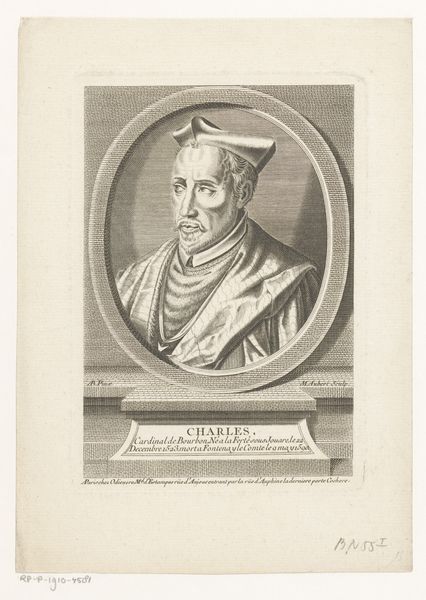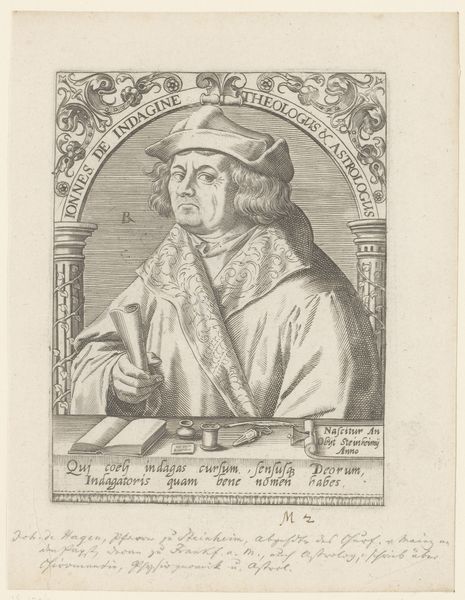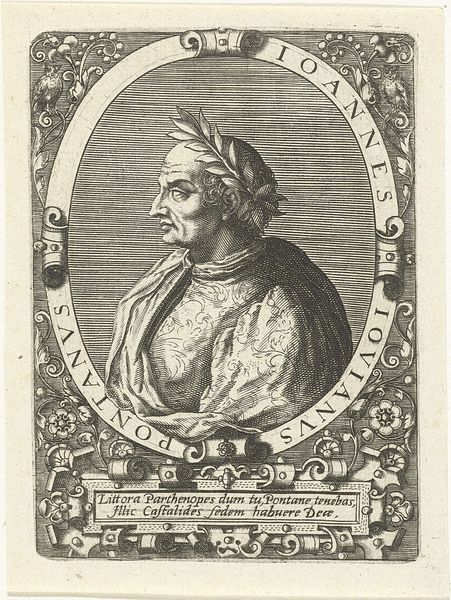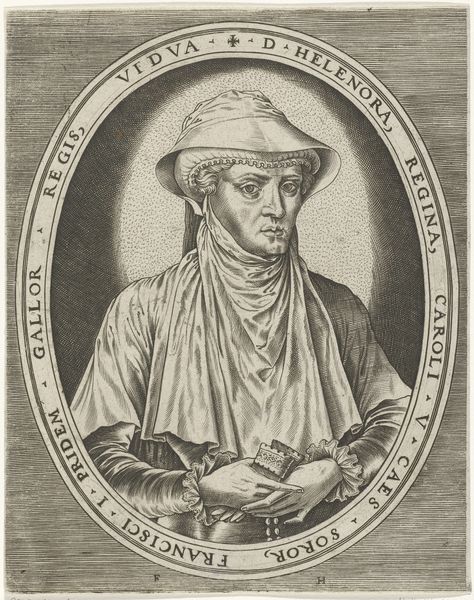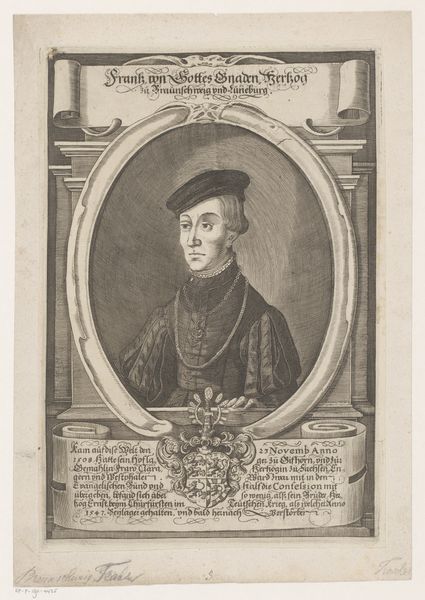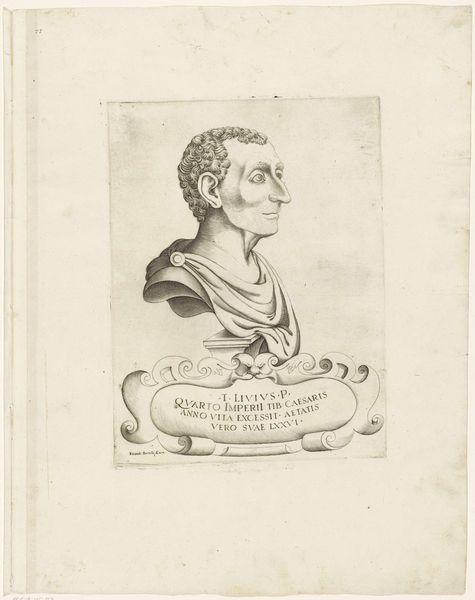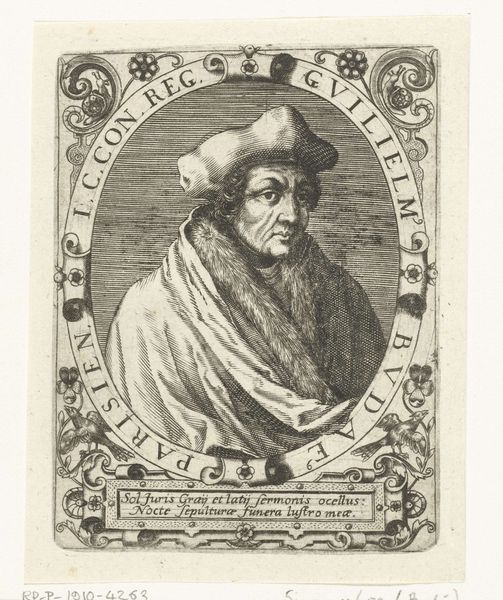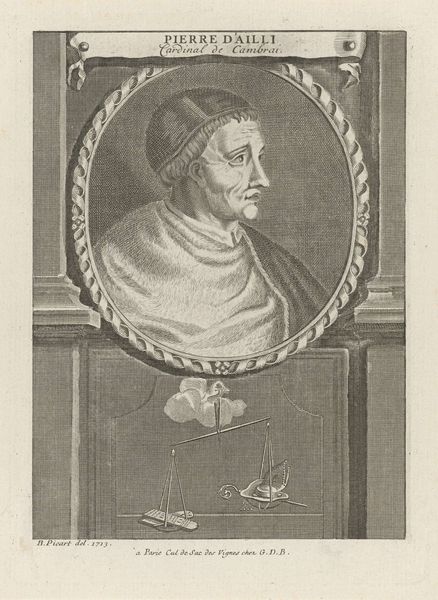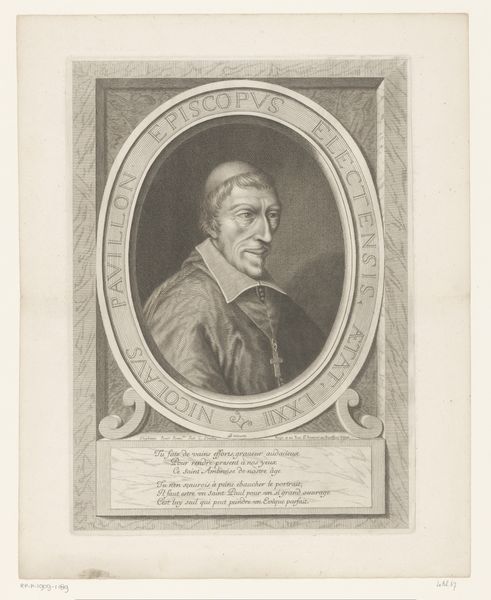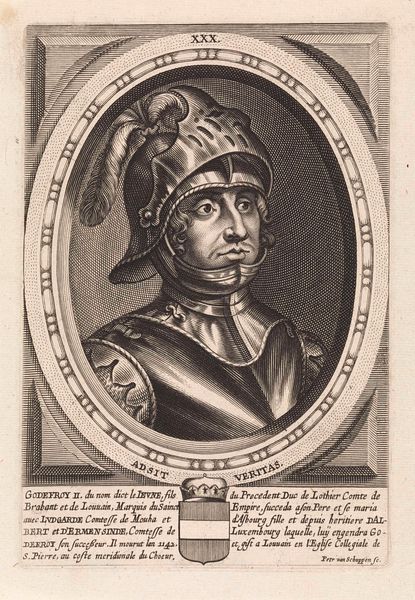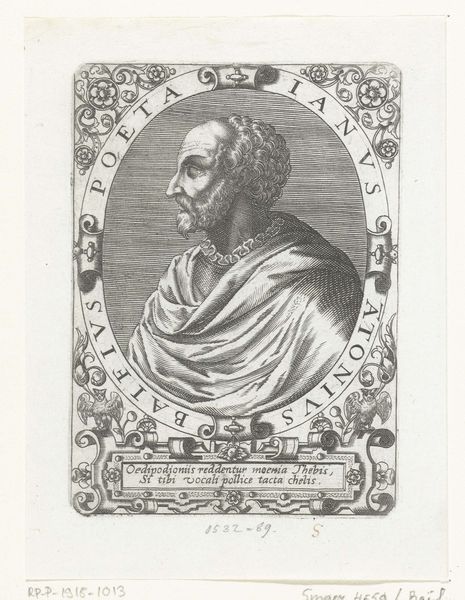
graphic-art, print, engraving
#
portrait
#
graphic-art
# print
#
old engraving style
#
11_renaissance
#
personal sketchbook
#
northern-renaissance
#
engraving
Dimensions: height 134 mm, width 98 mm
Copyright: Rijks Museum: Open Domain
Curator: Here we have Theodor de Bry’s “Portret van Beatus Rhenanus,” an engraving dating back to somewhere between 1597 and 1669, currently residing in the Rijksmuseum. My immediate thought is “understated.” There’s a quiet dignity, almost a solemnity to it. Editor: Exactly. Looking at the craftsmanship inherent in this printmaking process, we can appreciate the labor invested in translating likeness onto a reproducible medium. Consider the paper it's printed on; its materiality anchors this representation in the social and economic conditions of the era, offering a tangible connection to its production. Curator: That precision in the line work, the meticulous cross-hatching…it lends such a palpable sense of texture, almost like you could reach out and feel the fabric of his clothing, the very wrinkles in his skin! Do you think he sat for this portrait, or was it perhaps derived from another source? It has an almost ghostly presence, you know. As if the man himself, Beatus, is only just about there. Editor: Good question. We can investigate workshop practices, access to materials, and even the availability of skilled labor in De Bry’s time to fully appreciate this piece. Understanding those production elements provides crucial insight. It also raises an important challenge: What did images, particularly those reproduced, *do* during that period, who had access to them, and what power dynamics did those relations establish or confirm? Curator: Yes, definitely a way to learn about and see the cultural milieu and context of this period. I am also noticing something about this Northern Renaissance portrait, there is a garland with a banner underneath of beautifully handwritten Latin; there is something incredibly lovely and quaint about it. Editor: Exactly, and from a materialist viewpoint, this inscription also demonstrates the inseparability of art and literacy among certain elites. And now we might reflect briefly: does our engagement with reproductions, especially given contemporary capitalism's ubiquity, hold different political and economic meanings than the historical dynamics shown here? Curator: I appreciate the invitation to see it through a materialist lens! For me, this little print is not just ink on paper. Editor: Absolutely! It also showcases material processes that extend all the way into cultural history. Thanks for walking us through this compelling graphic example of a time now long gone.
Comments
No comments
Be the first to comment and join the conversation on the ultimate creative platform.
